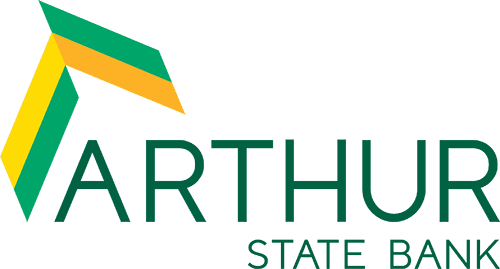As anyone responsible for paying the bills is well aware, life is filled with a long list of expenses — both anticipated and unexpected. And of course, the best way to ensure that the needed funds are available to cover either of these is to have a substantial reserve of savings set aside. Further, for any consumer, building up a considerable amount of savings is one of the biggest keys to financial security and stability.
But for many Americans, this is all much easier said than done. Because, let’s face it, building up a large reserve of savings can be a formidable challenge.
9 steps to building (and maintaining) a budget
Fortunately, though, by creating a personal budget and sticking to it, consumers can gradually build up their savings and put themselves in a much better position to handle expenses both large and small. Consider these nine steps to creating and maintaining a household budget:
- Gather your financial documents — To get started, you’ll want to gather all of your financial documents such as bank statements, credit card statements, pay stubs, recurring bills, investment paperwork and even spending receipts. You’ll use all of the data from these documents in the two steps that follow — and the more complete the information you can gather, the better idea you’ll have of how much money you have coming into and flowing out of your household each month.
- List out your monthly income — Using the income-related documentation collected in the step above, create a list of all the income your household brings in each month. For workers who are full-time employees and receive weekly or bi-weekly paychecks, this step could be as simple as adding up the net income brought home (the dollar amounts seen on those checks). Households whose members have side jobs or any other means of extra income should add in any amount (after taxes) brought in there, too. For those who do freelance or seasonal work, a good rule of thumb here is to use the amount of income brought in during the past year’s lowest-earning month. Add up all of the figures in the list you’ve made to create a total for your monthly income.
- … and your monthly expenses — Next, create a list of all of your monthly expenses. This list is likely to include such costs as rent or mortgage payments, utility bills, groceries and other food, car payments, various types of insurance, gas and/or public transit fees, and entertainment — along with anything else you’ve spent money on over the course of the month. Add all of these expenses up to create a total for your monthly expenses.
- Determine your income standing — Subtract the expenses total calculated in step 3 from the income total calculated in step 2. Is the result a positive number? If so, this is a good starting point for strategizing a way to start saving. If, on the other hand, you reach a negative number in your calculation, you will need to make some more serious changes. (If your expenses exceed your income, you’ll need to find ways to bring the former down and the latter up in order to create financial sustainability and have opportunities to generate savings. While the flexible spending outlined below makes sense as the first place to target for spending cuts, having significantly more expenses than income may necessitate larger changes, such as moving into a place with lower rent or mortgage payments, finding a new job or taking on more work, or finding a less-expensive form of transportation.)
- Categorize your expenses — Examining the expenses list you created in step 3, separate your fixed and variable expenses. Your fixed expenses will be the ones that remain the same (or close to the same) each month, including largely set amounts such as rent or mortgage, utility bills, car payments, insurance, and gas and/or public transit fees. Your variable expenses, on the other hand, will be the ones that tend to vary from month to month, such groceries and other food, entertainment, and any splurges that you might find on the expenses list.
- Pinpoint your flexible spending — In the vast majority of cases, most of your flexible spending will fall into the expenses list created in step 3 — and many of the items here are likely among the variable expenses identified just above in step 5. Wherever it may have landed in the steps above, your flexible income is the easiest to control via budgeting and planning. For most households, this includes things like entertainment, dining choices (and especially dining out), and splurges.
- Adjust your budget — This is the step where you plan for changes that will give you more money to devote to savings. Start by focusing most intensely on the flexible spending pinpointed above. Are there obvious areas where you can make cutbacks, such as having fewer dinners out, or spending less money on splurges such as non-vital luxuries and expensive vacations? Are you really using those subscription services enough to justify the amount spent on them? Are your visits to the coffee shop a little too regular, and could you replace some of them by brewing your own?
Making seemingly small changes can add up big over time. Identify any areas where you could consistently spend less, then set an informed target for the amount of money you’d like to instead contribute to your savings and/or paying down existing debt each month.
A good rule of thumb to follow when setting your savings goal is known as the 50/30/20 budget rule. This concept sees roughly 50% of the budget devoted to essentials, 30% of the budget going to non-essential expenses, and the remaining 20% allotted to paying down debt and growing savings.
- Stick to the plan — Once you’ve set your budgetary goals, do your best to stick to them — and remember that the reason you’re doing so is to improve your financial security and stability. A few of the good financial habits to keep in mind here include:
– Giving serious thought before making big (and especially any sizable, non-essential) purchases
– Avoiding impulse spending on large purchases
– Avoiding the accumulation of credit card debt whenever possible
– Planning out weekly meals, and limiting dining out — especially when it falls outside of your budget
- Stash away your savings and/or pay down debt — If you can stick to the plan (and if no large, unexpected expenses arise), you should have extra funds available at the end of the month for paying down existing debt and contributing to your savings. Paying down debt should be your top priority, as doing so will help you avoid paying added interest fees. And to facilitate your savings efforts, you may want to consider opening a savings account so that you have a place to store your money away — while both reducing the temptation to spend it and earning interest on the sum.
Proudly serving South Carolina since 1933, Arthur State Bank offers accounts and services to meet a variety of financial needs. To help you achieve all your financial goals, the bank offers in-person service as well as a range of convenient digital solutions. To learn how Arthur State Bank can help you with banking needs ranging from checking and savings to retirement accounts, mortgages, other personal loans and more, visit arthurstatebank.com.






















